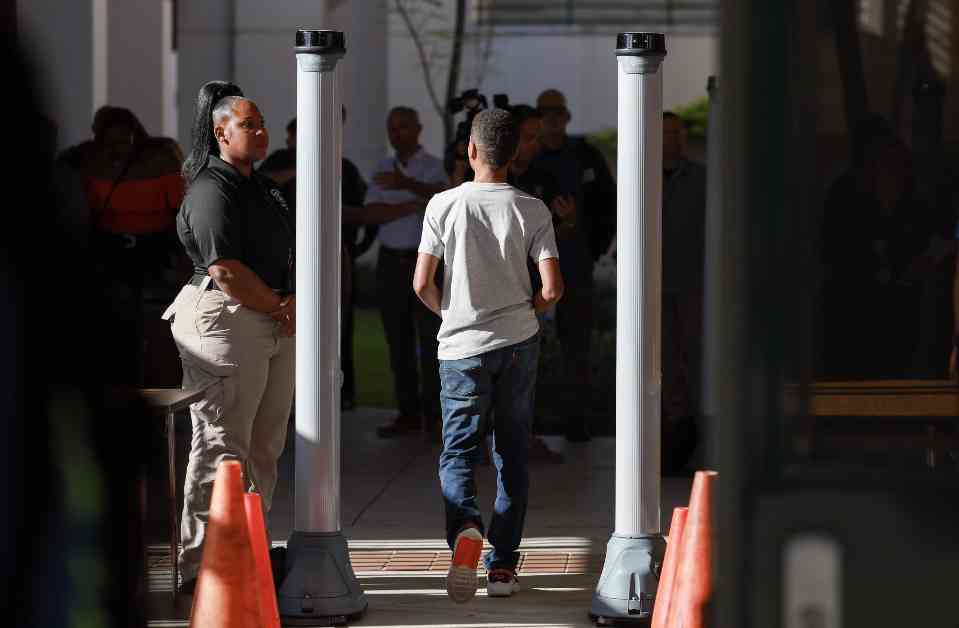As my sophomore year started at a new public high school in New York City, I couldn’t help but notice the resemblance to a small prison with its dark brick exterior and barbed wire on the roof. The recent installation of metal detectors at the front entrance only added to the feeling. My classmates and I, mostly Black students, were made to walk through security measures that extended to the street, all in the name of safety. It was clear that we were being perceived as a threat and punished for something we didn’t do.
The reality is that many students across the United States face similar situations. Black middle and high school students are disproportionately subjected to more security staff than mental health personnel compared to white students. Data consistently shows disparities in school discipline practices, with Black students facing higher rates of disciplinary action than their white peers.
While the debate on school safety intensifies due to the rise in school shootings, the emphasis on increased police presence in schools may not be the most effective solution. Research indicates that physical security measures like surveillance cameras, metal detectors, and school resource officers (SROs) do not necessarily create safe and inclusive learning environments. In fact, the presence of SROs can have negative impacts on the educational performance of Black students.
Despite the push for more police in schools, it is essential to consider alternative approaches to ensuring safety and supporting students. Investing in mental health resources, restorative practices, and social and emotional learning efforts can contribute to creating a safer school environment. Additionally, involving students and families in policy-making, hiring culturally responsive counselors or educators, and implementing support systems can help prevent conflicts from escalating to violence.
As schools navigate the challenges posed by the pandemic and the need for safer environments, it is crucial for policymakers and school leaders to prioritize students’ physical and mental well-being. Rethinking discipline policies and advocating for initiatives like the Counseling Not Criminalization in Schools Act can steer schools towards a more inclusive and nurturing climate.
Students deserve an education in a setting that prioritizes their safety, learning, and overall well-being. It’s time for school leaders to move away from punitive measures and focus on creating environments where all students can thrive. By reimagining school safety strategies and investing in holistic support systems, we can ensure that every student has the opportunity to learn and grow in a safe and welcoming school community.


